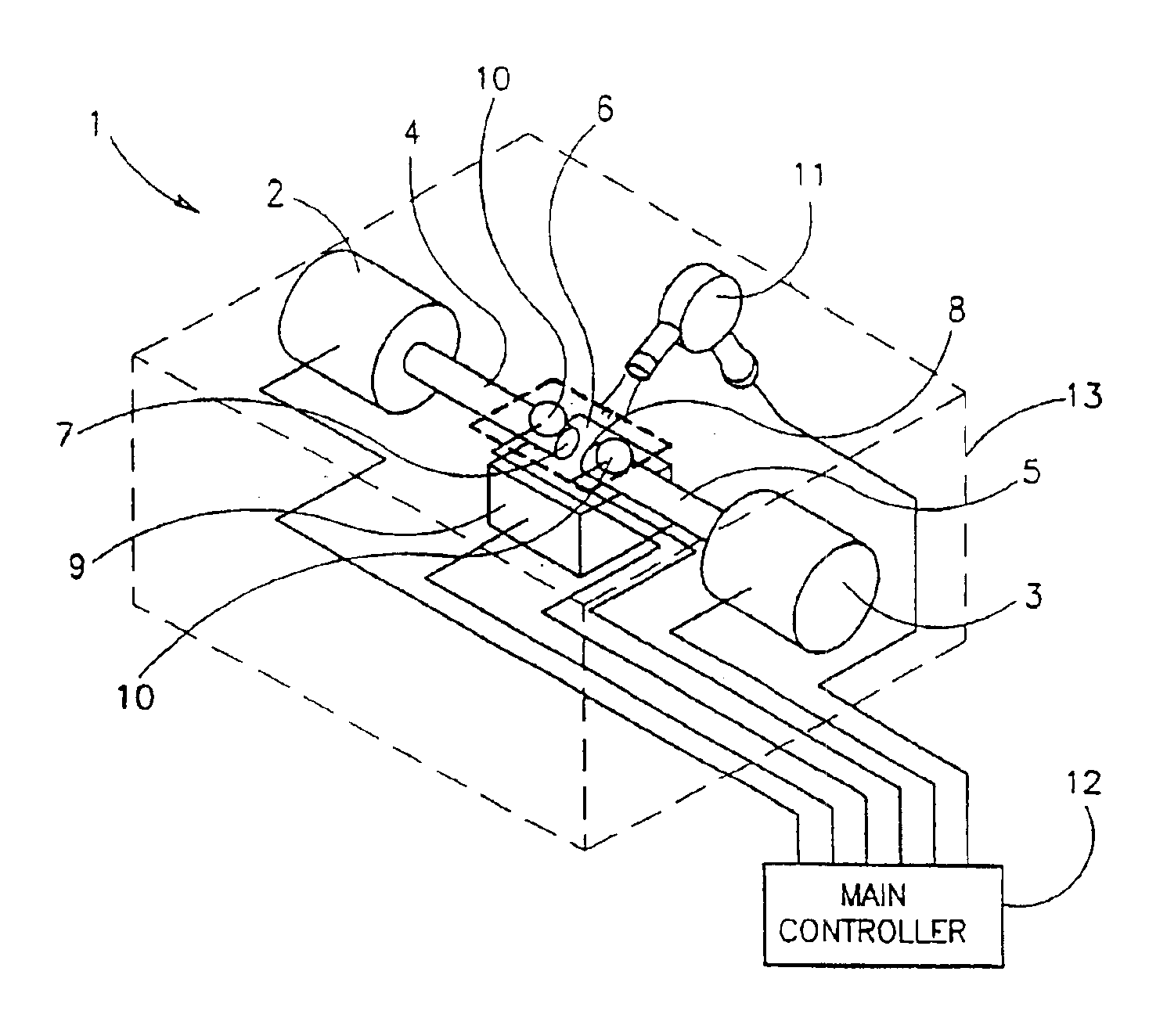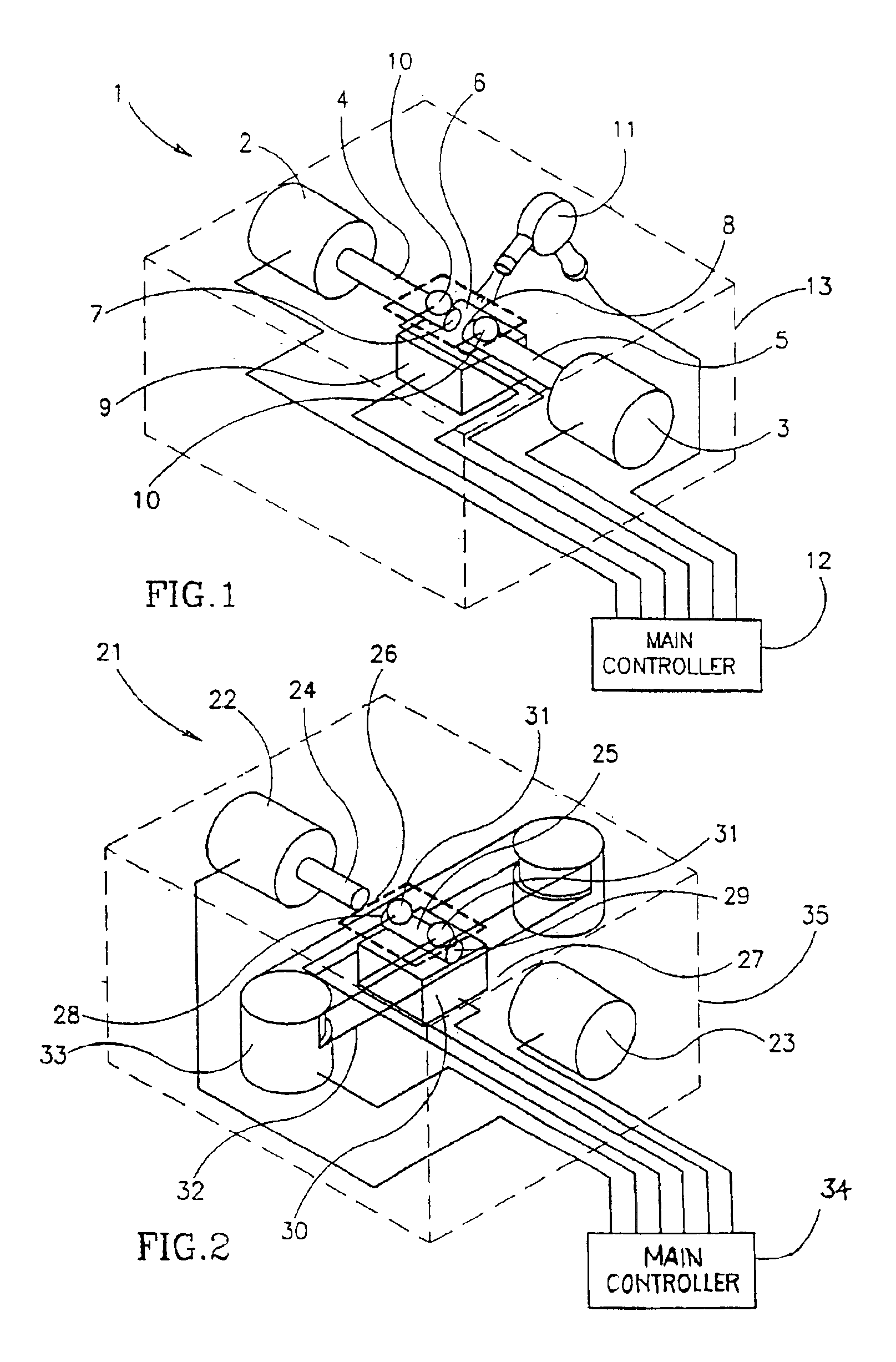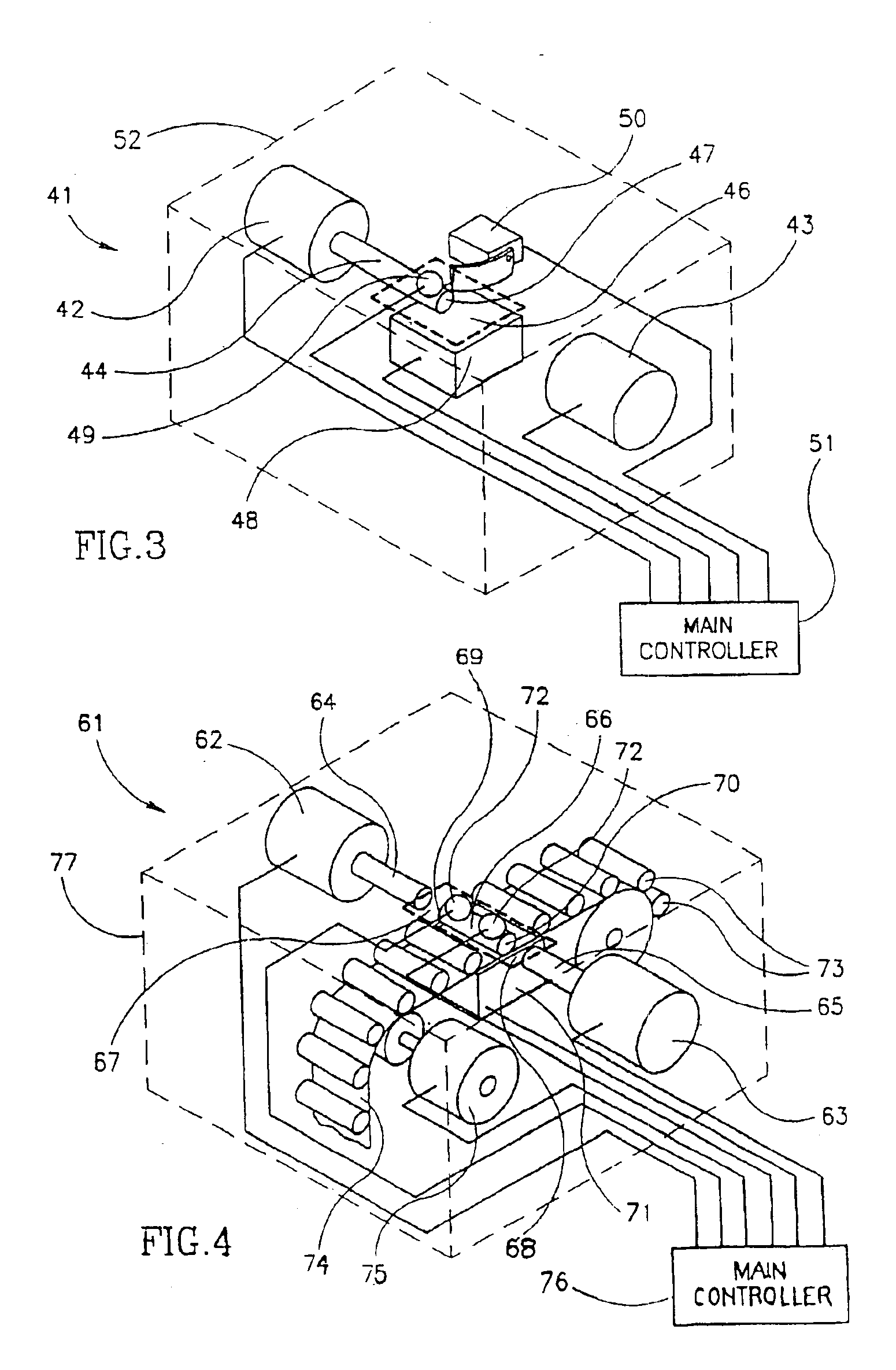Dew point hygrometers and dew sensors
a technology sensor, which is applied in the direction of material thermal analysis, instruments, and analysis by subjecting materials to chemical reactions, can solve the problems of unreliable capacitance measuring instruments, unsuitable routine work, and high cost of sensors based on dew point hygrometers. to achieve the effect of increasing the sensitivity of dew point hygrometer
- Summary
- Abstract
- Description
- Claims
- Application Information
AI Technical Summary
Benefits of technology
Problems solved by technology
Method used
Image
Examples
first embodiment
[0078]Reference is first made to FIG. 1 which shows a dew point hygrometer 1 in accordance with the first option of the invention. The hygrometer comprises a light emitter 2 for example HFBR-1524 transmitter (Hewlett Packard Components, USA), a light detector 3 for example HFBR-2524 receiver (Hewlett Packard Components, USA). Light emitter 2 and light detector 3 are coupled through a light path defined by two optic fibers, a first optic fiber 4 coupled to the light emitter and a second optic fiber 5 coupled to the light detector. Optic fibers 4 and 5 are spaced from each other so as to form sensing gap 6 therebetween. The optic fibers are for Hewlett Packard plastic fiber optic cable HFBR-PUS001 diameter 1.0 mm. (Hewlett Packard Components, USA). The uncoupled end of the first optic fiber 7 and the uncoupled end of the second optic fiber 8 serve as dew forming ends. These ends are in contact with the gas which dew point is to be determined. Formation of dew on ends 7 and 8 changes t...
second embodiment
[0093]Reference is now made to FIG. 5 which shows a fiber-optical dew sensor in accordance with the invention, for sensing the natural condensation, for example use in greenhouses. The dew sensor 80 comprises two optic fibers 81, having rough ends 88. The optic fibers have a gap therein-between 89. The optic fibers are embedded in a PVC white plate 82 which temperature is similar to the natural temperature of the ambient environment. One optic fiber 81 is connected to a light emitter 83, for example, HFBR-1524 transmitter (Hewlett Packard, Components, USA) and one optic fiber 81 is connected to a light detector 84. At night, while there is cooling, due to infrared emission of the plate 82 to the direction of the sky, the optic fibers 81 embedded in the plate are also cooled, and water condensates on the rough edges 88 of the optic fibers, filling the rough edges, and as a result the light transmitter in the optic system is increased.
[0094]An electronic control system 85 controls par...
third embodiment
[0097]Reference is now made to FIG. 6, which shows a film dew point hygrometer according to the invention, comprising a condensation film. The dew point hygrometer 90 comprises a condensation film, for example a nylon transparent film 91 placed on a thermoelectric cooler 92. The film reflects light sent from light emitter 94, through optic fiber 93 into optic fiber 95 connected to light detector 96. With the use of a fan 97, air is mobilized on the condensation film, and cools the warm side of the thermothermic cooler 92. While cooling condensation film 91, by thermoelectric cooler 92, water condensates on external side (i.e. the side facing upward) of the film and changes the light reflection from both sides of the film, which change is detected by light detector 96. Temperature sensors 98 and 99 measure the temperature of the condensation film and the air, respectively. An electronic control system 100 controls the work of the cooler 92, the light emitter 94 and the light detector...
PUM
| Property | Measurement | Unit |
|---|---|---|
| time | aaaaa | aaaaa |
| voltages | aaaaa | aaaaa |
| thickness | aaaaa | aaaaa |
Abstract
Description
Claims
Application Information
 Login to View More
Login to View More - R&D
- Intellectual Property
- Life Sciences
- Materials
- Tech Scout
- Unparalleled Data Quality
- Higher Quality Content
- 60% Fewer Hallucinations
Browse by: Latest US Patents, China's latest patents, Technical Efficacy Thesaurus, Application Domain, Technology Topic, Popular Technical Reports.
© 2025 PatSnap. All rights reserved.Legal|Privacy policy|Modern Slavery Act Transparency Statement|Sitemap|About US| Contact US: help@patsnap.com



